
Our ethnic face
The Australia of Pauline Hanson’s second parliamentary term looks very different to the Australia of her first
By
April 2017
Advertisement
From the front page
Paul Keating called them “rednecks with blue collars”. John Howard preferred a less loaded caricature, “the flannel shirts”. They described the traditional Labor voter who swung to the Coalition at the 1996 election and kept moving to the right when Pauline Hanson told them that we were in danger of being swamped by Asians.
The official statistical label of “white without a college degree” identifies the contemporary American version of the old Hansonite. This is the voter who made Donald Trump president by swinging once safe Democratic states in the industrial north-east and upper Midwest to the politically incorrect Republican candidate.
If Peter Dutton wished to use the migration program to save the next federal election for the Coalition, he could do worse than launch a poaching raid on the American rust belt.
I am joking, of course. As every Australian politician should know by now, the migration system that evolved under the Keating and Howard governments was biased towards skills. The welcome mat was moved from the working and peasant classes of Britain and southern Europe to the university students and professionals of Asia.
The best way to understand the shift is to compare the Australia to which Hanson delivered her maiden parliamentary speech in 1996 and the one that returned her to politics last year.
In 1996, the Australian population comprised 13.2 million locals and 4.5 million migrants. Our ethnic face was still predominately white. The English-born were the largest ethnic community, with 872,000 people. Add the Scots, the Welsh, the Irish, the New Zealanders and the South Africans, and the English-speaking migrants numbered almost 1.5 million, or a third of the total. The European-born accounted for another 1 million, while the Asian-born stood at 856,000.
Now flip those tables. On the latest estimates from the Australian Bureau of Statistics, the locals have grown to 17 million and the migrants to 6.7 million. Now the Asian-born are the dominant migrant bloc, with 2.5 million people, or just over a third of the total. The English-speaking white migrants from the United Kingdom, New Zealand, South Africa and Ireland are next with 2.1 million, while the Europeans have dropped to third, with 1.1 million.
The English-born are still the largest ethnic community at just under 1 million, but almost half are now over 55.
Half the Chinese-born in Australia today are aged under 35, while half the Indian-born are under 33 – and these two communities now combine to outnumber the English-born.
Here’s an interesting political game to play. Which voter carries more weight now: the old Australian or the new? In 1998, Pauline Hanson’s One Nation party received just over 1 million primary votes in the Senate, or 9% of the total. That meant her constituency was a little larger than the Asian-born population at the time.
At last year’s federal election, her party’s Senate vote was just under 600,000, or 4.3% of the total. In other words, the Hansonite vote has been reduced to a number that is equivalent to a quarter of the Asian-born population. Hanson could have used her maiden speech to the Senate last year to say, “I told you so.” But bullies kick down, not up, so she yelled, instead, at all Muslim Australians, the local and the migrant. They numbered 476,300 at the 2011 census.
It takes a certain political blindness for the Liberal Party to view this incarnation of Hanson as somehow more acceptable than the last simply because she now targets a group that the main parties are themselves prepared to demonise (whether through the back door of refugee policy or the more direct approach of former prime minister Tony Abbott, who questioned their loyalty to Australia).
Hanson remains, at heart, an anti-migrant politician. Her supporters may not see themselves as bigots, and certainly many are attracted to her party for reasons other than race. But she will remain electoral poison for the Liberal Party when almost half the population is either born overseas (28%) or has a parent who was a migrant (20%). The equation is relatively straightforward: the voters Hanson offends on the question of race will usually exceed those she inspires. The lesson of her previous term in politics, between 1996 and 1998, hasn’t changed: One Nation is a direct competitor to the National Party, but it poses the greatest threat to the Liberal Party’s standing as a governing party. If the Liberal Party preferences One Nation ahead of Labor, it loses more primary votes to Labor than it saves for the Coalition cause.
The test case was the Queensland state election in 1998. Rob Borbidge’s Coalition government thought it could retain power by placing One Nation ahead of Labor. But One Nation proved to be an equal-opportunity wrecking ball, collecting 11 seats in total: six from Labor and five from the Nationals. But Labor offset those losses by grabbing six seats from the Liberals, while the Nationals lost a further seat to an independent. Labor’s Peter Beattie became premier with the support of one of the two independents, and followed that narrow win with a hat-trick of landslides in 2001, 2004 and 2006.
The result of the Queensland election in 1998 forced a reluctant John Howard to agree with Tim Fischer, Peter Costello and Alexander Downer, respectively the minister for trade, the treasurer and the minister for foreign affairs, to put One Nation last at that year’s federal election.
History repeated in Western Australia last month. Only this time, the state government and One Nation were humbled together. Hanson blamed the preference deal with Colin Barnett’s Liberal Party for One Nation’s relatively poor showing. Yet Malcolm Turnbull greeted Labor’s landslide victory with a shrug. He said the question of preferences for the federal campaign was a matter for the Liberal organisation, to be settled closer to the next election, due in 2019.
Then again, Turnbull’s apparent indifference might simply be a case of selective amnesia. He only entered parliament at the 2004 election, long after Howard had seen off Hanson Mark I. In this, he is typical of the modern Liberal. Of the 83 federal members and senators, only eight were in parliament when Hanson held the Ipswich-based seat of Oxley. This gang of eight is a mix of conservative and moderate: Tony Abbott, Kevin Andrews, Russell Broadbent, Warren Entsch and Christopher Pyne in the House of Representatives and Eric Abetz, Ian Macdonald and Marise Payne in the Senate. Two more names are worth noting: Julie Bishop entered parliament at the 1998 election, while Arthur Sinodinos, a senator since 2011, had been a key member of Howard’s staff from 1996 to 2006.
It was Sinodinos who declared in the lead-up to the Western Australian election that One Nation had changed. “They are a lot more sophisticated,” he explained on the ABC’s Insiders program. “They have clearly resonated with a lot of people. Our job is to treat them as any other party.”
When host Barrie Cassidy pressed Sinodinos to clarify how One Nation had changed when their policies hadn’t, he said that “the media have started to treat [Hanson] with a bit more respect”.
But Sinodinos would be wrong to think that Hanson is more popular today than she was two decades ago. Consider the 2001 state election in Western Australia. One Nation claimed a primary vote of 9.6% and was instrumental in the defeat of Richard Court’s Coalition government. At last month’s poll, the One Nation primary vote was just 4.9%.
The laziest political analysis in Australia today begins with the assumption that Hanson Mark II is somehow our version of Trump. That confuses Australia’s past with the American present.
Australia is a substantially larger nation, in absolute size and social complexity, than it was two decades ago. In 1996, the Australian economy was emerging from the long shadow of the Keating recession. The economy was smaller than that of the Netherlands and only a quarter the size of the UK’s. Today Australia’s economy is almost double the size of the Netherlands’ economy and half the size of the UK’s. We could conceivably catch the mother country by the middle of the century, if the price of her leaving the European Union is even slower growth and the independence of Scotland and Northern Ireland.
When the Liberal Party looks to Hanson, and not to the centre, it denies itself the chance to talk up Australia as a destination for even more skilled migrants, including the next big wave of “white” migrants. Brexit and Trump represent a once-in-a-century opportunity to launch a poaching raid of the American and British elites in science, business, the arts, sport and even the public service. Trump seems determined not only to lock the door to new arrivals but also to tear down the citadel of American soft power in the State Department. That institutional memory would be invaluable to the Australian bureaucracy.
A fresh wave of cashed-up skilled migrants might seem like political suicide in the present setting, where the program is already associated in the public mind with elevated housing prices and infrastructure bottlenecks. But the alternative of lower migration is not a practical option. The Keating–Howard model has taken the program out of the hands of politicians, and it is employers and universities, basically, that decide who comes to this country. The status quo will mean a more Asian-ised Australia. While this is to be celebrated, we cannot assume the Chinese and Indians will keep coming: other nations may make them a better offer. The other scenario is that they might overwhelm all other groups.
Somewhere between these two risks is an active government that ensures Australia’s continued success through diversity. Surely a Liberal leader could sell the idea of a talent grab from Britain and the US to conservative Australia.


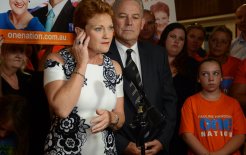
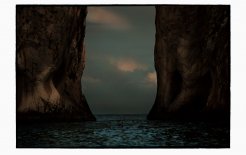

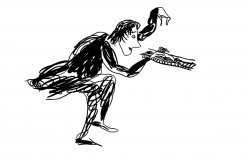
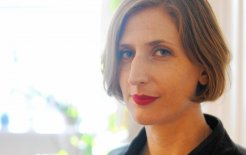

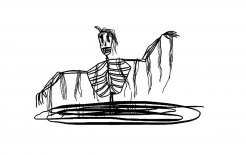







Comments
Comments are moderated and will generally be posted if they are on topic and not abusive. View the full comments policy.